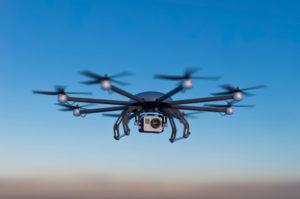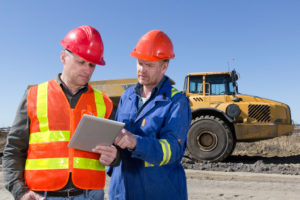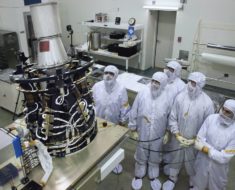To the outsider, it might seem that most construction sites are rather low-tech when other industries are considered. Hammers swinging, ladders, scaffolding, manual labor? These are all signs of primitive behavior, right? — wrong. Just because the tech industry overshadows the construction industry with its fancy blinking lights and gadgets, that doesn’t mean that construction is left in the stone age so to speak. You might be surprised at just how much technology and science is under research, or already being implemented today.
Aloha Construction keeps up on the latest developments in the construction industry, including new gadgets, research, and best practices. All this research is done to implement the absolutely most efficient building tactics to keep construction more cost efficient, more time efficient, and most importantly: safer.
We want to share with you two of the new interesting industry trends that are buzzing today.
1. The use of drones on construction sites
2. The further research of the science of fractures
Both of these topics will help advance the construction industry to be more efficient and build stronger, safer structures for less money.
Let’s get started.
What is a Drone’s Doing on a Construction Site?

Really, the answer is: tons of stuff. Aloha Construction is researching every aspect of what a drone’s duty could be on a construction site and just how they can save money, and help the building process move quicker.
What could a drone do?
● Detect power outages
● Inspect power lines and poles
● Generate aerial photos, maps, and 3D images

● Ensure work site safety
● Improve productivity
● Act as a surveyor — but faster
● Save lots of money
Well now, that sounds like no small feat. This is why we decided not to ignore the drone in construction sites. When compared with traditional approaches to surveying, the drone can do them much quicker, more efficiently, and at a lower cost, than a person (or a manned aircraft) could ever accomplish them. On top of the low cost of surveying a construction site with a drone, you have even more things to consider like speed and even frequency of data collection.
A drone can literally collect data at a construction site as many times as you need it to, take real-time photos of construction progress, and more.
Currently, the state of Illinois is using drones to detect power outages and inspect power lines. Much quicker than a person could drive through every neighborhood, a drone can survey the whole neighborhood in a matter of minutes.
Aloha Construction aims everyday to be an industry leader, and in order to do that, it’s important to keep tabs on new construction-technology as it pops up. If you stay informed, you can make important decisions that will allow you to cut costs, work smarter, improve efficiency, and deliver a superior construction.
The implementation of drones isn’t just for fun; it’s not just simply for show; it brings back an honest return on investment (ROI). Drones, or unmanned aerial vehicles, could change the way construction is done forever. It could cut down on billions of dollars of waste currently seen in the construction industry in America.
We have to be responsible for our finances, safety, and how we treat planet Earth.
Eventually, drones could be fitted with technology even more advanced than today. They could be used to detect things as hard to tell as natural-gas leaks. Right now, there is still a gap in the available technology available for the construction industry concerning drones, but the market is catching up. Some drone-market industry leaders are realizing the need for drones in construction and are doing their best to develop new technology to make using drones even more feasible and efficient.
On to the next construction industry trend:
The Science of Fractures
The science of fractures might seem like a boring topic, but you could easily see why it’s such an important one to the construction industry and us personally here at Aloha Construction. Understanding why and how things break or crack is important because one of the primary ways any material fails is through the propagation of cracks.
If we can learn more about materials science, and how high pressure concentrated around a crack affects its propagation, we can create stronger, more efficient, and crack resistant materials.
It’s interesting to note that a crack has the potential to be formed and then race as fast as the speed of sound, splitting it in two, but we don’t see this in reality. Turns out, cracks have a science of their own. The crack itself grows in an unstable way. It doesn’t crack in an exactly straight line — more of a wobbly-wavy direction. This wobble is still completely unaccounted for while studying traditional fracture science, which still assumes that a crack should, in theory, continue in a straight line. However, in practice, this is almost never true.
There is now a way to predict a cracks path of destruction under different circumstances through intensive computer simulations. Still, this study is in its investigatory stage, and more needs to be learned. Researchers are currently looking to understand the nonlinear relationship that cracks have with pressure and propagation.
The study of fractures in brittle materials such as ceramic, glass, and similar materials, will help people in the construction business to understand how these materials fail and can relate them to stronger materials like steel. This can mean the saving of lives during catastrophic events like earthquakes, floods, hurricanes, tornados, and more. On top of that, it could mean an increased knowledge in the health-science field when it comes to bone fractures and can be implemented to help people heal.
Aloha Construction does its best to keep its finger on the pulse, so to speak, when it comes to industry specific technology, science, and advancements. The construction industry is more than just cavemen swinging hammers; it’s filled with professionals who are interested in creating a safer, more efficient building process.
Be sure to take a look at the Twitter of Aloha to join the family of Aloha Construction!
Dil Bole Oberoi






